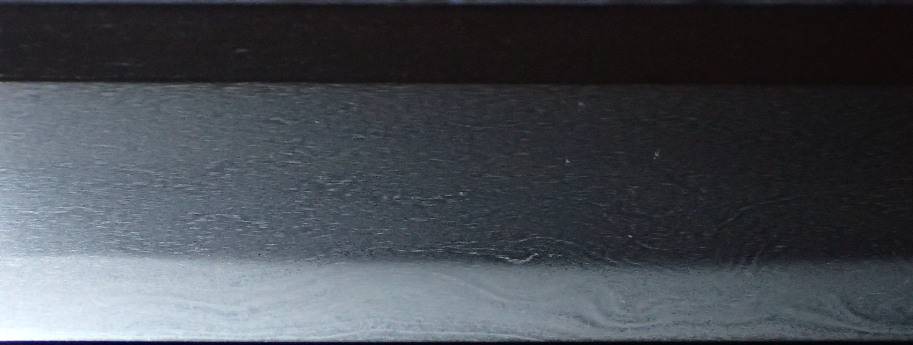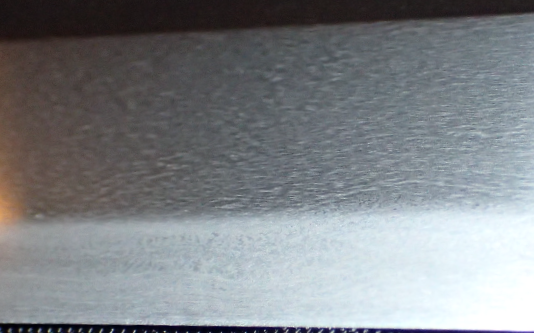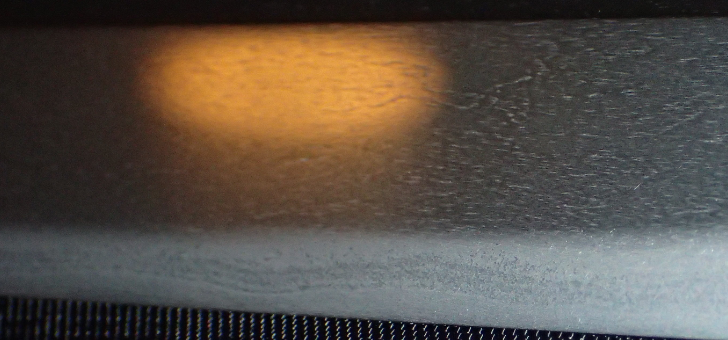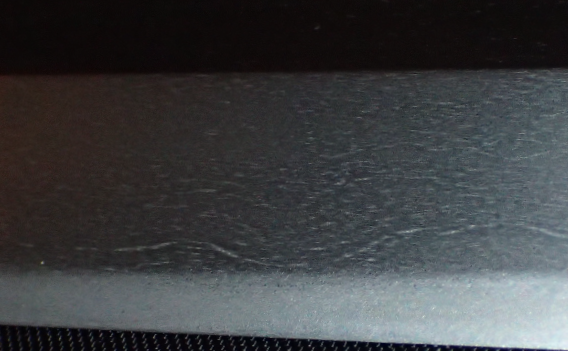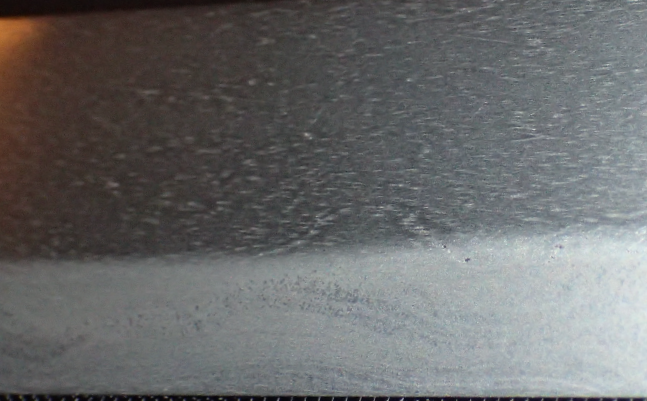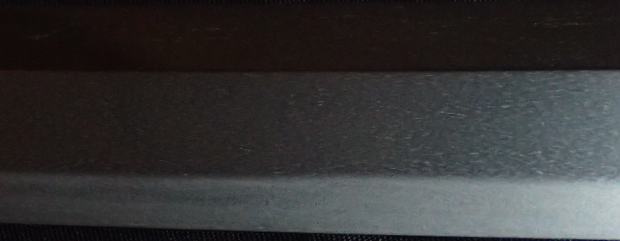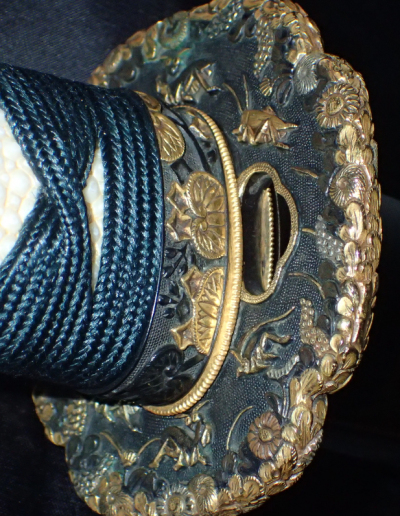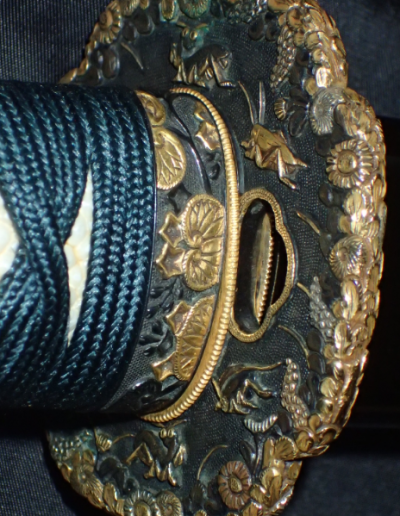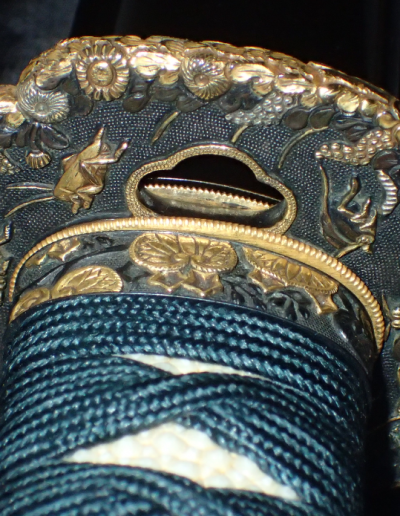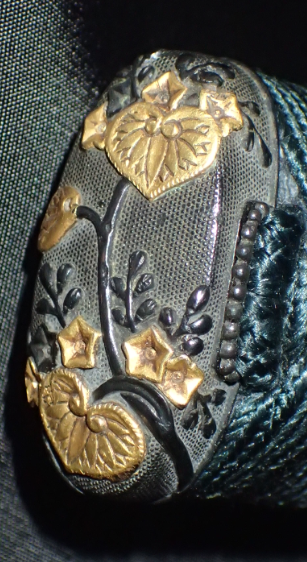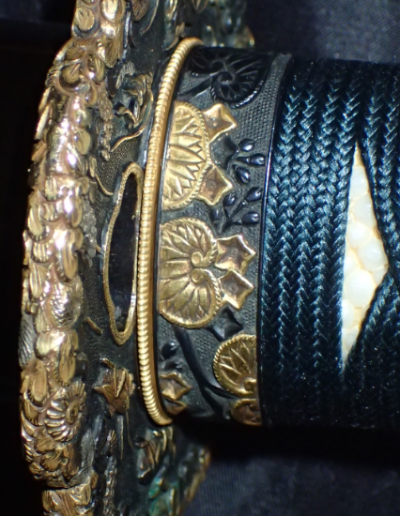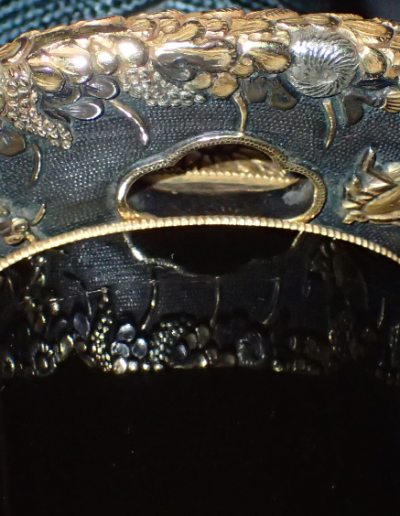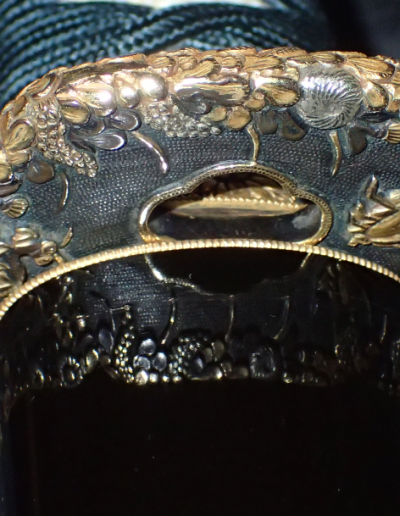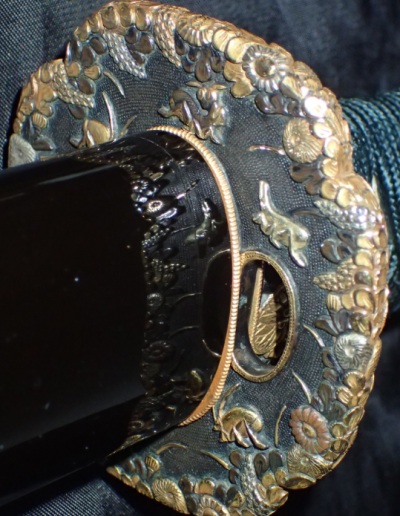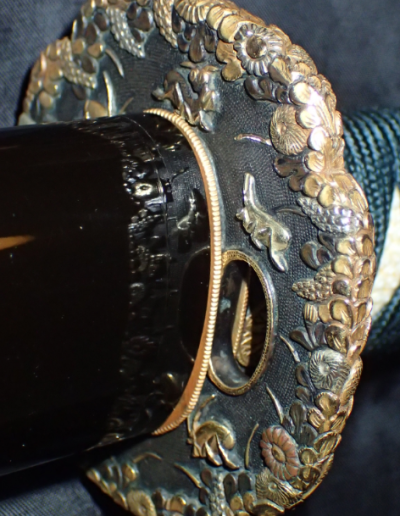This katana is on display at this time.
An excellent early Koto katana attributed to the Senjuin school a very elegant Slender blade tapering to the Kissaki (Funbari), with a ko-kissaki . showing the elements of a classic Tachi-Sugata.The flawless hada is beautifully forged in an itame mixed with mokume with nagare masame in the ha, a clear strong Utsuri is visible , The Hamon is nie-laden based on Suguha with a clear nioiguchi that is mixed with Ko-Midare, nijūba, kuichigai-ba, hotsure, ashi, yō, kinsuji, and sunagashi and starts with Yakiotoshi which is often seen in Heian and Kamakura Blades. The Blade has Tokubetsu Hozon Certificate from the NBTHK and also from a private Museum called The Sword Fittings Museum (Nihon Tōsōgu Bijutsukan) which has now closed.
The Koshirae is a Tenshō-style Uchigatana Koshirae featuring a glossy black-laquer saya. Fuchi Kashira: Aoi motif, shakudō, nanako ground, takabori relief, iroe accents, Menuki: carp motif, shakudō, katachibori, iroe accents Tsuba: is an Excellent Mino school with inscect motif , Tsuka: covered with white same and wrapped in tsumami-hishimaki style with navy blue Tsukaito, Koshirae is fitted with a tsunagi.
NBTHK KANTEI – SHO (鑑定書) – APPRAISAL
No 1003508
Katana , unsigned: Senjuʼin (千⼿院)
nagasa ~ 69.4 cm
According to the result of the shinsa committee of our society, we judge this work as authentic and rank it as Tokubetsu – Hozon Token .
[Foundation] Nihon Bijutsu Tōken Hozon Kyōkai, NBTHK (⽇本美術⼑劍保存協會)
Yūshū-Bunkazai-Tōken at the 4th Shinsa from October 1, 2000
Sword Fittings Museum (Nihon Tōsōgu Bijutsukan, ⽇本⼑装具美術館)
Katana, unsigned: Senju’in (千⼿院)
Measurements: nagasa 69.3 cm, sori 2.2 cm, motohaba 2.85 cm, sakihaba 1.6 cm, kissaki-nagasa 2.3 cm
Shape: shinogi-zukuri, iori-mune, normal mihaba, noticeable taper, sori that bends down towards the tip, high shinogi, ko-kissaki Kitae: itame that is mixed with mokume and towards the ha with nagare-masame, that features jinie, and that shows a sugu-utsuri along the lower half.
Hamon: nie-laden suguha with a clear nioiguchi that is mixed with ko-midare, nijūba, kuichigai-ba, hotsure, ashi, yō, kinsuji, and sunagashi
Bōshi: yakitsume with nijūba and sanjūba
Nakago: ō-suriage, kirijiri, kiri-yasurime, one mekugi-ana, mumei .
Artisan: Senju’in School from Yamato province Era: Kamakura period (13th century)
Explanation: This blade has a sugata with a high shinogi, a ko-kissaki, and a sori that bends down towards the tip. Its jigane features masame towards the ha and plenty of ji-nie and it is hardened in a nie laden suguha that is rich in variety and that is mixed, i.a., with ko-midare, ko-gunome, kuichigai-ba, and uchinoke. The jiba is bright and clear, and the yakitsume-bōshi clearly reflects Yamato characteristics as well where upon this blade can be attributed to the early Kamakura period Senju’in School.
Designated as a Yūshū-Bunkazai No. 108
Katana, unsigned: Senju’in (千⼿院)
Nagasa 69.3 cm, sori 2.2 cm
Shinogi-zukuri, iori-mune, ko-kissaki; Kitae: itame with nagare;
Hamon: suguha mixed with ko-midare and nijūba;
Nakago: ō-suriage, kiri-yasurime, one mekugi-ana
We designate the above described object as a Yūshū-Bunkazai-Tōken (優秀⽂化財⼑剣, lit. “Excellent Cultural Asset Sword”).
November 1, 2000
Sword Fittings Museum (Nihon Tōsōgu Bijutsukan, ⽇本⼑装具美術館)
[President] Hiroi Yūichi (廣井雄⼀)




















